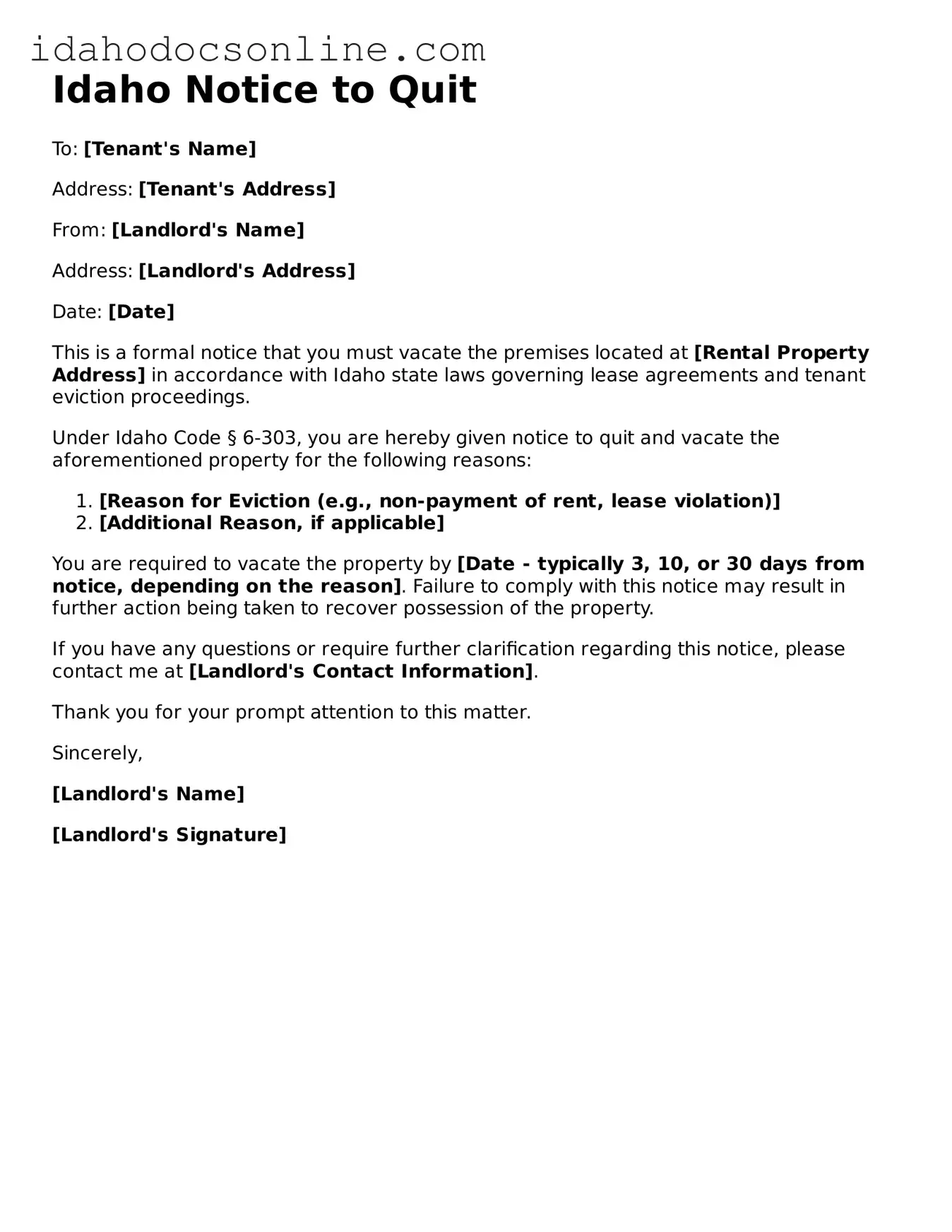Free Notice to Quit Form for Idaho
The Idaho Notice to Quit form is a legal document used by landlords to formally notify tenants that they must vacate the rental property. This notice typically outlines the reasons for termination of the tenancy and the timeframe in which the tenant must leave. Understanding how to properly complete this form is essential for both landlords and tenants to ensure compliance with state laws.
For assistance in filling out the form, click the button below.
Fill Out Your Document
